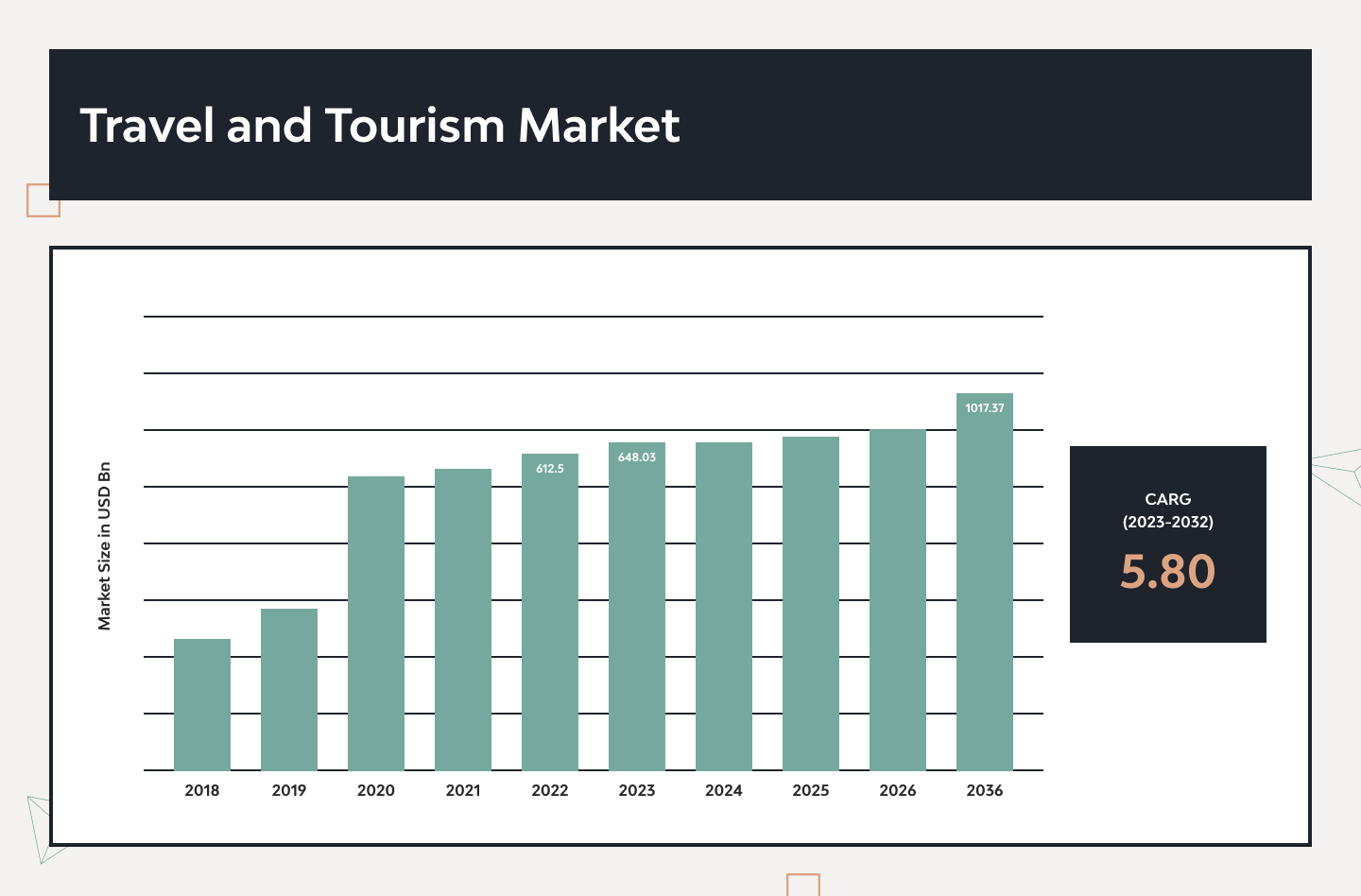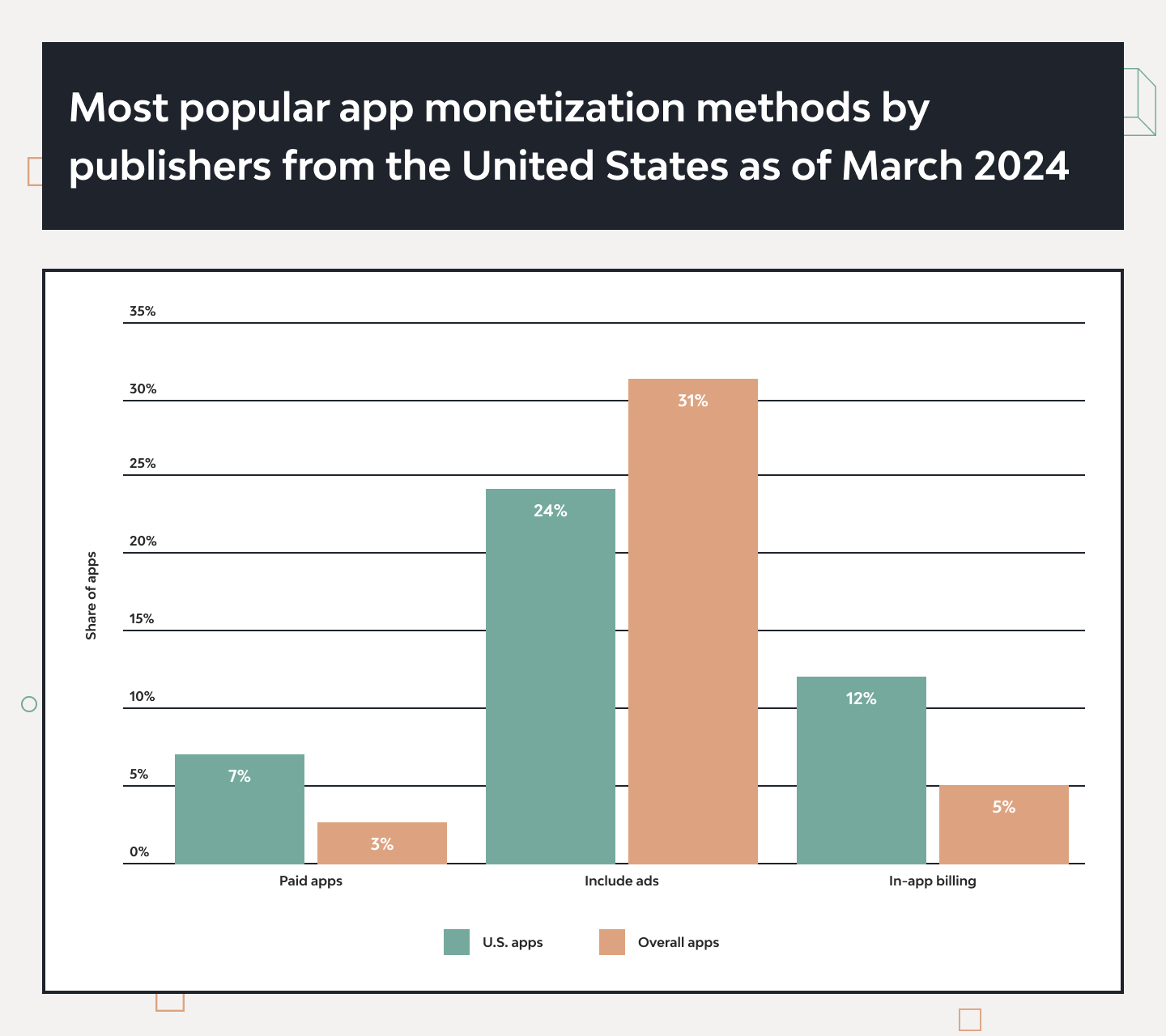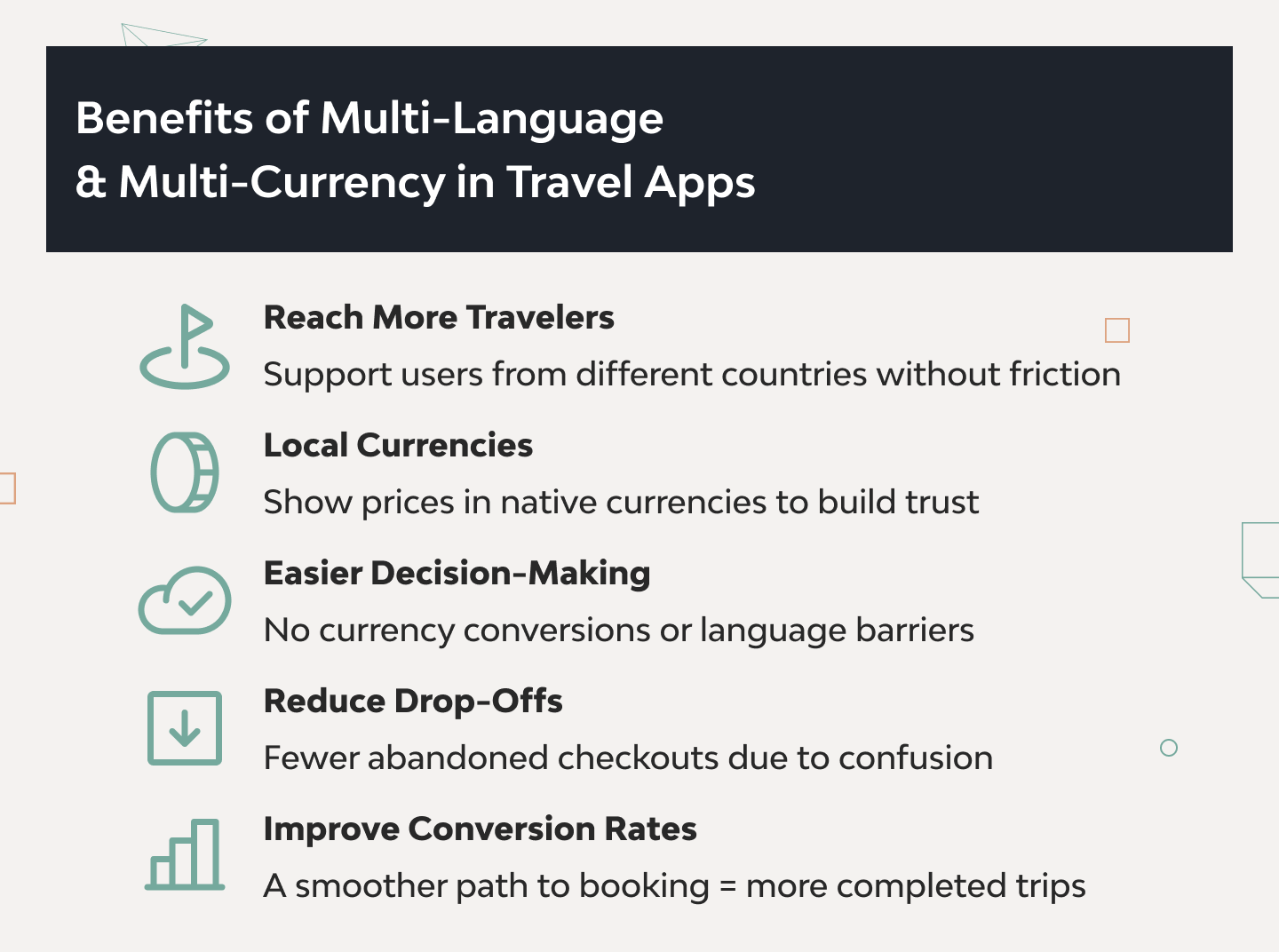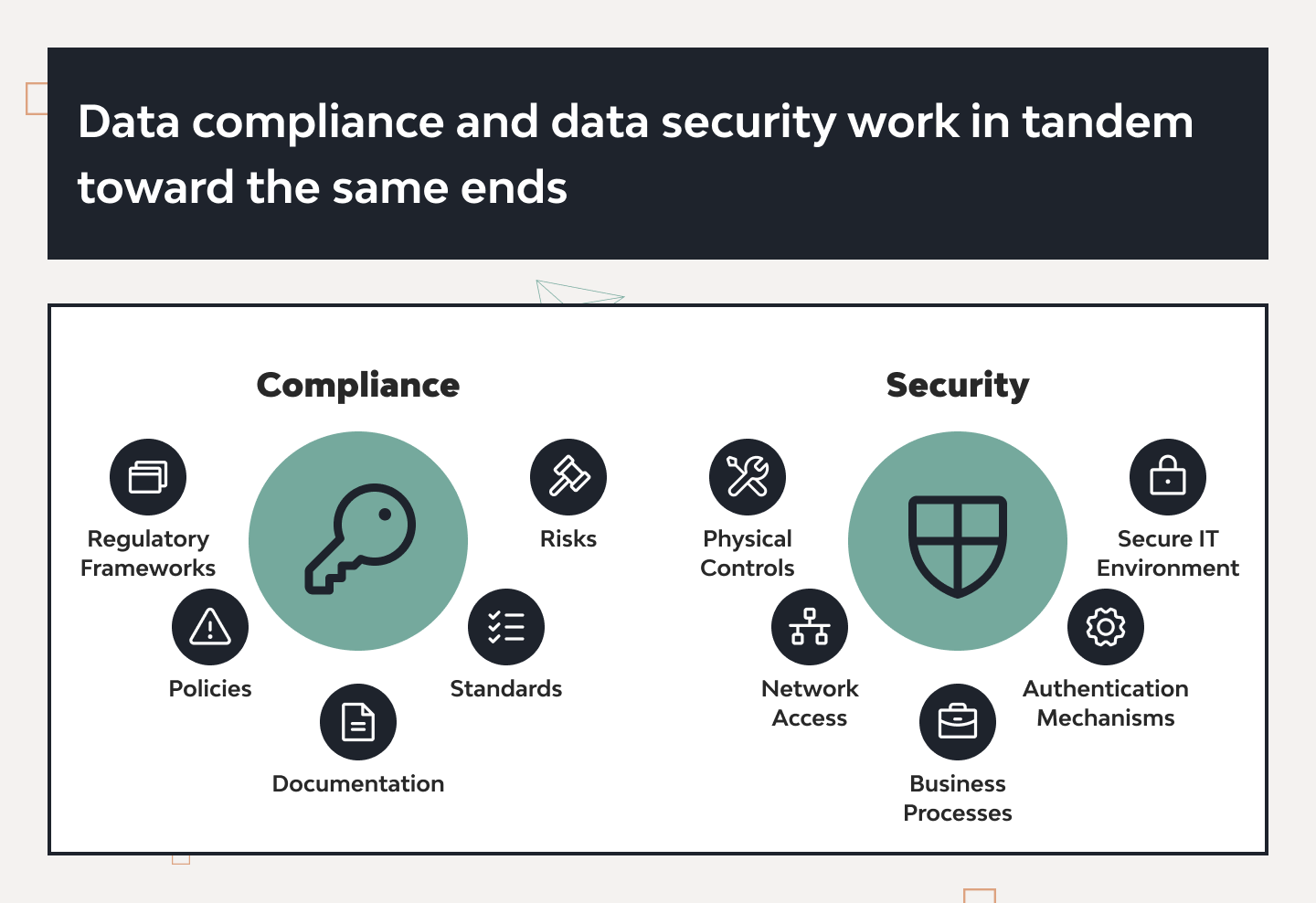Travel Mobile App Development from A to Z

In the contemporary mobile-driven world, we use our gizmos not only for communication but also for work, studying, shopping, caring for our health, having fun, and other purposes. Traveling is one of the domains where the penetration of smartphones is ubiquitous, with 80% of people leveraging online tools to book a hotel or other services. Two years ago, the number of people who utilized a mobile travel solution reached 850 million, which has increased since then. Given such a huge user audience, it would be a shame not to exploit this revenue-generating opportunity to make a quick buck.
The article contains a set of guidelines for businesses looking for success in travel application development.
Brief summary:
- The essence of a travel app
- Their types and monetization models
- Basic travel app features
- Technologies to utilize in SDLC
- Steps to create a travel app
- Factors conditioning the cost to build a travel app
- Tourism app development challenges
A Travel App in a Nutshell
A mobile tourism application is software installed on a smartphone that is honed to help travelers plan, book, and manage their trips. Such a travel marketplace app integrates various related services and information under one virtual roof, enabling users to handle various aspects of their journey. It includes flight and hotel reservations, itinerary arrangements, destination guidance, travel conditions, and more. It can be fashioned for a particular audience, like, for example, a booking platform for scuba divers that we have developed.
The mission-critical element of a travel application is its user-friendly interface, which allows tourists to discover and book flights, hotels, and cars for rent. Once you land the service you need, you pay for it via a secure payment gateway. Geolocation in travel apps is a must-have facility that provides users with navigation and tips on local attractions. All updates concerning flight status, weather conditions, and local events are delivered through push notifications. To personalize suggestions and recommendations and ensure a smooth traveling experience, such products utilize data analytics that offer insights into user travel history, preferences, and tastes.
Since the number of international tourists was estimated at 1.4 billion in 2024 (an 11% increase from the year before), the potential user audience for such products is mind-blowing. The travel and tourism market is also growing steadily, displaying a 5.8% CAGR until 2032.
As a result, the travel app niche within the global IT landscape is forecasted to increase from $134.4 billion last year to over $242 billion by 2030, manifesting a solid CAGR of 9.2%. Revenues in this sphere are also on a steep surge, crossing the threshold of $600 billion in 2023.
All the industry trends point to the attractive business prospects of dedicated app development for travel companies and software vendors. Explore our case studies to see how Django Stars helped travel businesses succeed.
If you want to carve a fair share of this huge revenue pie, you should consider launching a travel startup app. And when you think about how to make a travel app, the first thing to determine in such projects is how your solution will make money for you.
Travel App Monetization Models Made Plain
As a vetted expert in travel software development, we at Django Stars offer our customers a choice of the following money-making techniques.
- Commission-based model. It is what most travel booking apps rely on. They charge a fixed fee for each sale occurring through the app.
- Listing charge. In it, not customers but service providers become the source of income. Tour operators, local attractions, hotels, and other organizations pay a fee (a one-time payment, a subscription, or a booking commission) to appear in the app’s listings and offers. Consequently, both app owners and tourism service companies stand to benefit.
- Merchant model. Here, the app functions as a travel agent that buys services from providers and resells them at a premium. The app can sell travel package bundles to maximize profits from this scheme.
- Advertisement. This model is one of the most popular monetization strategies in the app market.
- In-app purchases. If you can sell relevant items (luggage-tracking equipment, travel guides, language packs, virtual tours, you name it), this model is just what the doctor ordered. However, it should be viewed as a complementary scheme to reinforce the primary money-making method.
- Subscription model. Users pay a regular fee and obtain exclusive features and personalized services (such as concierge or offline maps). This model aims to cover the typical audience of high-profile travelers seeking top-notch experiences, and this sector is growing yearly.
- Freemium model. This monetization approach is a variation of the subscription scheme. It allows users to enjoy the app’s vanilla version for free. However, if they want to move further than basic capabilities and access advanced features (exclusive deals, itinerary management, real-time updates, etc.), they subscribe and pay to get them.
- Dynamic pricing. Here, the prices are modified in real-time according to fluctuations in demand, peer competition, and user behavior. The most lucrative offers in this category are last-minute deals.
- Affiliate marketing. By partnering with travel-related organizations and promoting their products or services, app owners earn a commission on sales their affiliates make through the app.
Banners, interstitial ads, video ads, incentivized ads, and native advertisements from third-party companies (such as hotels, airlines, travel agencies, or local enterprises) work perfectly for solutions without high direct sales but with a great user audience.
The choice of a monetization model (or a balanced combination of several schemes) is largely determined by the travel app’s type.
Zooming in on Travel App Types
Travel apps fall into the following basic categories.
Booking platforms
Flight booking app development allows you to enter a competitive market of Global Travel software. Here belong mobile applications (such as Booking.com or Expedia) enabling people to book reservations for all kinds of travel necessities, for instance, flights, hotels, rental cars, etc. Tourists can also book an entire journey with all the above-mentioned elements. A secure payment gateway and an inventory management capability are the key features you should envisage during hotel booking app development.
Trip planning apps
An alternative name for them is itinerary planner apps. As it is easy to guess, apps like TripIt are instrumental in organizing itineraries for future journeys. These solutions keep reservations, bookings, and activities in one place, helping tourists devise detailed trip plans, choose destinations and landmarks, view sightseeing guides, and even book excursions. To build a successful custom travel app of this type, you should identify the niche it will serve (solo travels, family vacations, budget trips, adventure journeys, and the like) and focus on it.
Local experiences apps
They are your personal companions and guides during travels, whether you choose trite sights and well-trodden paths or are in for offbeat attractions and bizarre entertainments. Apps like Culture Trip or Klook will let you discover both, learn about unique activities you can participate in (like cooking, painting, or various rituals), establish rapport with locals or travel experts in a particular place, explore peculiar spots, and even book driver services in advance.
Navigation and transportation apps
Traveling is always about meeting the unknown. But getting lost in an unknown city is definitely not what tourists cherish. Navigation apps like Waze are called to help people get from the airport or railway station to any destination they need. They rely on real-time traffic and weather data to opt for the shortest route, bypassing constructions, accidents, and policy activity along the way.
When amplified with transportation functionalities, such apps (like Uber or Lyft) enable passengers to enjoy ridesharing or bike sharing, rent a car, or use mass transit with fare estimation and user reviews, and reach the desired place quickly.
Virtual tour apps
Some people prefer to have a good look at the destination they are heading to. Virtual tour apps like Lokal, YouVisit, and Google Arts and Culture provide them with every opportunity to check out landmarks and sights during immersive journeys through 360-degree images and videos, very often accompanied by interactive elements. Detailed walkthroughs typically have integrated audio guides and are compatible with VR headsets.
Niche and business travel apps
Here belong various narrow-purpose solutions (for instance, travel expense management apps, concierge apps, travel insurance apps, currency conversion apps, pet-friendly travel apps, etc.) that cater to special user audiences or handle miscellaneous aspects of a trip to turn it into a smooth and enjoyable experience.
The travel app’s specifics largely determine the roster of functionalities to be included in it.
Must-have features of a travel app in 2025
A decade and a half of experience in providing bespoke software development services for the tourism industry gives us a clear picture of what is necessary to build a competitive solution. Now you can’t carry the day by equipping your travel app with bread-and-butter features such as registration, customizable user profiles, authentication, or onboarding. Since every user-centric application provides them, you should go to all lengths to offer something unique and disruptive, turning your product from a garden-variety travel app into a solution that makes a difference. It means crafting the following functionalities.
AI trip planning and recommendation engines
The latest Skift Report claims that 85% of tourists rely on travel advisors to create customized trips with tailored destination and accommodation suggestions, activity recommendations, dining options, itineraries, entertainment, transportation, and health experiences. A travel app can ensure such a high degree of personalization only if equipped with state-of-the-art AI tools indispensable for individualized journey planning and receiving the ultimate traveling experience.
Real-time alerts and smart notifications
Unlike usual alerts and notifications, these are AI brainchildren. Thanks to AI-driven apps’ machine learning and data analytics capabilities, they are personalized, relevant, timely, and actionable. In other words, they are tailored to individual preferences and behavior, optimized for maximum engagement, and contain links to resources and documents users might need.
Comprehensive search with advanced filters
This feature helps customers find exactly what they want in seconds. To ensure such a capability, the respective button should be easily discoverable on the UI and contain only the most frequently used options based on personal needs and preferences, instead of overwhelming people with dozens, if not hundreds, of opportunities. The reasonably limited number of choices will let them quickly narrow their search and continue their user experience toward a perfect journey.
Booking and reservation management
The functionality enabling travelers to book flights, hotels, tours, rentals, transfers, and entertainment is the core feature of all travel apps. You should go the extra mile and provide a reservation management option to stand out among competitors. Employing it, tourists can view all reservations on one screen, discover additional information (such as fare rules, price comparison, layover duration, baggage policies, seating arrangements, breakfast availability, etc.), and modify their bookings in case of need. Customer support is a welcome bonus here.
Integrated maps and navigation
Knowing where you are is nice, even when you have a guide to show you around. But when you travel rough, accessing maps on your mobile gadget is mission-critical. Equipping your travel app with a GPS-based location capability and turn-by-turn navigation, you will simplify getting directions for its users, let them find destinations easily, track routes, explore new areas, and discover points of interest on their own.
Offline access and data synchronization
Modern adventure seekers often find themselves far from civilization, where internet connection is intermittent or absent. Yet, they still want always to have maps, itineraries, and booking details at their fingertips. Providing them with offline mode enables users to access critical information wherever and whenever they need it.
AR/VR for immersive experiences
Such technologies are the bedrock of virtual tour apps, yet other travel solutions can also benefit from them. By showcasing the assets of hotels, restaurants, landmarks, or even entire cities, AR/VR-powered apps invite tourists to enjoy their beauty in the real world, employing vision and all five senses.
Multi-language and multi-currency support
These features are geared toward ensuring the ultimate traveling experience for tourists in any place they visit and making your solution accessible to international audiences. To keep abreast of current trends in the finance domain, you can enable operations with cryptocurrencies via your app’s payment gateway.
User reviews
Today, peer opinions of independent consumers play a crucial role in purchasing decisions. Statistics show that 72% of people read other travelers’ reviews before booking a service. Given such numbers, you have no choice but to allow your app users to share and discover customer feedback concerning their experience of flying by airlines, staying at hotels, dining at restaurants, and visiting attractions.
Sustainability-focused features
Regenerative tourism is a novel trend that has gained considerable traction lately, where the eco-friendliness of services is a tipping factor for 70% of travelers. They are even willing to pay more for less convenience during the trip. Such people prioritize bringing positive changes into ecosystems and enriching local communities while receiving authentic experiences. A future-focused travel app will win reputationally and financially if it caters to environmentally responsible audiences, providing them with the services they crave.
When you sort out the features for your future travel app, you can understand what tools, programming languages, libraries, and frameworks should be used to build it.
Determining the Travel App Tech Stack
Each aspect of tourism software development is accomplished with an exceptional technology roster.
Front-end development
Here, the choice is determined by the operating system of the app-to-be. iOS apps require Swift as a programming language, as well as the iOS SDK and Apple XCode toolkit. Android-based apps’ client side is implemented by using Kotlin as the main programming language and the respective SDK and Android developer tools. Flutter or React Native are the best framework for building a cross-platform travel app.
UI/UX
A travel app’s design is supported by Figma, Sketch, or Adobe XD and is conducted in the Objective-C programming language.
Back-end development
Typically, we utilize one of the three mainstream platforms (AWS, Microsoft Azure, or Google Cloud) to build the app’s server side. Among databases for travel app back-end creation, PostgreSQL or MySQL are excellent as relational ones, whereas MongoDB offers a more flexible NoSQL option. The scope of available back-end programming languages is rather wide, but we prefer Java, Node.js, Ruby, or Python. Read more about our expertise in Python development services.
Solid back-end frameworks include Laravel, Express.js, Ruby on Rails, CakePHP, and Spring.
Integrations
Flight and hotel bookings require access to various third-party resources. To ensure this, you should leverage APIs—either your own or those provided by GDS. Also, integration with mapping and location services via Mapbox or Google Maps API is vital.
Payment gateway
You should integrate the one your target audience uses most. Popular solutions of this kind are PayPal, Stripe, and Braintree.
The wise choice of the right tech stack won’t help you much if you don’t know how to wield it.
How to Create a Travel App: An Implementation Roadmap
The travel app development process we recommend harnessing includes seven distinct steps.
Step 1. Conducting competitor research
Before diving headlong into the SDLC, you should understand whether your travel app idea holds water business-wise. It can be done by performing in-depth niche research and market analysis. You should start by creating a user persona for your product with their demographics, income level, preferences, and pain points. Then, you should discover existing solutions in this niche, peruse their fortes and – more importantly – shortcomings, and come up with the unique value proposition your app will offer.
Step 2. Selecting app type and features
These elements are closely connected. Naturally, most travel app types have some basic features that are common to them (like user registration, booking capabilities, payment gateways, push notifications, geolocation, and the like). However, you can fill your custom solution with unique functionalities (for instance, a currency converter or blockchain integration) that will let it stand out among its counterparts. Both must-have and advanced features should align with your app’s unique value proposition.
Step 3. Finding a reliable vendor
When you sift through outsourcers in the software development realm, you should pay attention to such factors as the company’s presence in the market, its experience in the vertical, qualifications of its employees confirmed by valid certificates, a strong portfolio with successful projects similar to the one you have in mind, reasonable pricing policy (too low rates are to be shunned), favorable reviews and high rankings on specialized platforms (such as Clutch or GoodFirms), flexibility in cooperation, and positive testimonials from previous clients.
Step 4. Designing the app
The necessary stages of a travel app’s UI/UX design are user flow identification, wireframing, prototyping, crafting the interface, producing high-fidelity mockups, and building an MVP. The fundamental principle behind all design efforts is the maximum user-centricity of the future solution. The UI should be straightforward and uncluttered, with clear icons, readable fonts, and an appealing color scheme that ensures an enjoyable user experience. Then, we submit this first rough product version for trial usage by pilot audiences, collect feedback, and act upon it, introducing corrections and improvements.
Step 5. Coding and testing
This is the most time-consuming phase during which our software engineers devise the travel app’s architecture, craft front-end and back-end elements, build functionalities, and implement integrations. Testing starts during the development stage when each created component undergoes unit testing. As soon as the product is finished, QA engineers submit it to a thorough checkup, including a series of usability, performance, compatibility, load, stress, functional, accessibility, security, and other tests performed manually and automatically. All detected issues and bugs are eliminated at once.
Step 6. Launching and marketing
When the app is functional, safe, and issue-free, it is deployed and goes live. The app may take up to 10 days to be released, after which it will become available for Apple App Store and Google Play Store visitors. However, it can stay unnoticed by the audience unless you market it well. Your promotion strategy should create a buzz around the freshly launched app, so leverage social media, employ partnerships, and involve influencers to let people know that a new, useful product is out there.
Step 11. Updating and maintenance
Don’t rest on your laurels after your travel app is launched. It needs constant performance monitoring, bug fixing, introducing updates, fine-tuning, and streamlining its operation, conducting regular audits, and sometimes even adding new features. Besides, mobile stores can change their requirements, so you must modify your solution to comply with them. Also, it is essential to inform your customers (via social networks, newsletters, or in-app notifications) about updates and new functionalities and react to their feedback, thus staying in touch with users and remaining open to improvements and upgrades.
While building a travel app, you should be ready to overcome the roadblocks you may face in the process.
Addressing Typical Challenges in Travel App Development: Tips to Consider
What are the common pitfalls and bottlenecks travel software developers encounter?
Dealing with regulatory norms
The international nature of the tourism industry is an additional headache for businesses in this vertical, since diverse travel practices across countries account for differences in multiple related aspects, from data handling to payment processing. And if you fail to adhere to a specific law in some jurisdiction, you are in for trouble.
Solution: The crucial SDLC decision is to adopt a compliance-first approach while developing a travel app and incorporate a corresponding framework into it, updating the product according to every relevant legal change. To be safe, stay in constant touch with law practitioners competent in the regulatory systems of the destination countries, who will keep you abreast of all updates.
Managing peak traffic and scalability
The app’s infrastructure works under significant pressure during high seasons and holidays. Any downtime will cost you a lot, both in terms of revenue and brand reputation.
Solution: A scalable back-end is imperative for a travel app. It should be created with an eye to traffic surges and be flexible enough to scale up on its own when the number of user queries and operations with the app escalates.
Localization and multi-language support
As travel services are provided across the globe, your app must appeal to multiple cultures and languages. To ensure greater user engagement and maximum customer satisfaction, you should invest in your solution’s localization.
Solution: The best way to meet your clients halfway is to ensure professional translation of your app’s textual and audio content and create an adaptable design that changes according to the region where the app operates.
Apparently, these obstacles can and should be surmounted, but you may ask how much I must pay to build a travel app.
Travel Mobile App Development Cost
There is no one-size-fits-all price tag you can put on a travel app, and the cost to develop a flight booking app will also differ, even though at first glance they might seem similar. However, several factors ultimately determine the final budget you’ll need to allocate.
Geography
Software vendors in different regions of the world charge different prices for their services because of labor cost disparity across the globe. North American and Western European developers’ hourly rates are the highest ($150-200), whereas hiring IT engineers from South Asia will cost you a puny $20-40.
However, going by simple numbers is a huge mistake, since the output delivered by a low-paid workforce is often substandard. The wisest solution is to aim for a balanced price/quality ratio in software projects, which can be found in Central and Eastern Europe. Countries in the area (Ukraine, Poland, Romania, Bulgaria, and others) are proud of their large talent pool of highly qualified developers, cultural proximity to Western customers, and minimal time zone difference from major business centers.
Platform
The notorious iOS/Android divide is a huge cost driver because you must build two apps to reach the maximum user audience. And don’t forget about expenditures on your product’s web version. A wise cost-saving decision is to opt for a cross-platform travel app.
App complexity
Various app types require different numbers of features. The more features an app has, the more time the development team needs to craft them, which spells more paid hours for the IT personnel. The development timeline is lengthened significantly if these are advanced functionalities like real-time tracking, in-app chat, multi-language support, or tailored recommendations. The same is true of multiple integrations and cutting-edge technologies (AI, machine learning in travel industry, VR, blockchain, etc.), the solution is equipped with. And don’t forget licensing fees for using payment gateways and other third-party resources.
Project timeline
Short deadlines incur great expenses. Why? First, because you require a larger team to complete the project on time, this means more employees on your payroll and considerable overtime payments. Second, haste often increases the likelihood of errors and oversights, which will result in additional time for corrections and revisions. Thus, the deadline-is-yesterday approach is sure to cost you a pretty penny.
App design and user experience
Visual appeal and seamless UX are important for a travel app, but do not overdo it. If you go for an exquisite design with custom animations and transitions or utilize paid themes, be ready to loosen your purse strings. This is not only for the design but also for its thorough testing and optimization for different devices and screen sizes.
Data security and compliance
Since a travel app handles sensitive user data, it should be extra secure. Utmost security is also expected from financial operations performed through the in-app gateway. Besides, the solution should comply with major data protection regulations (GDPR, CCPA, and others). All these security-related measures drive the development cost as well.
Marketing and promotion
Those don’t belong to the SDLC, but without them, you can’t hope to hit it big with your travel app. Leveraging social proof, administering location-specific campaigns, performing app store optimization, launching loyalty programs, employing influencer marketing, and using other promotion mechanisms help you attract customers but require adequate financing to reach this goal.
All these factors considered, a travel app is obviously not a chump change issue. Market research and planning cost from $5,000 to $15,000, UI/UX design – $10,000-30,000, development – $40,000-150,000, testing and QA – $5,000-20,000, launch and marketing – $10,000-50,000. All in all, be ready to fork out anything between $70,000 and $265,000 for a product like that. However, every solution is unique, so you should perform an individual assessment to arrive at a more precise figure.
Key Takeaways
As the global number of tourists sharply increases, so does the travel software market, where mobile apps reign supreme. Travel agencies launch mobile products of different types (booking platforms, trip planning, navigation and transportation solutions, local experiences and virtual tour apps, you name it) that leverage advertisements, commissions, in-app purchases, subscriptions, freemiums, affiliate marketing, listing charges, dynamic pricing, and other monetization models to allow their owners to capitalize on the services they provide.
To let the travel app bring a steady stream of revenues into your company’s coffers, you should fill it with relevant basic and advanced features, choose a proper tech stack for its creation, bypass common hurdles during the SDLC, and follow an efficient software development roadmap.
Naturally, travel industry players can’t do that alone and unaided, so they should delegate travel mobile app development to seasoned professionals in the realm. Django Stars’ qualified and certified experts possess the necessary niche experience and top-notch skills to develop a high-end travel app that will impress your customers with smooth performance and sleek design.
- How much does it cost to develop a travel mobile app in 2025?
- The sum you will have to allocate depends on the app’s complexity and feature roster, the tech stack it requires, the solution’s platform (whether you build a separate app for each operating system or opt for cross-platform development), sophistication of design, project timeline, marketing expenditures, and hourly rates charged by the vendor. All these factors considered, the approximate travel app cost varies between $70,000 and $265,000.
- What key integrations are required for a modern travel app?
- A high-quality travel app should provide users with quick access to various third-party systems and resources that ensure the ability to book a flight, make a hotel room reservation, or rent a car. Geolocation and Google Maps will help tourists understand where they are and where to go next. Finally, a secure and efficient gateway to enable service payments is a must.
- Which monetization model works best for startup travel apps?
- As our experience in the domain tells us, startup travel apps do well by adopting a commission-based or a freemium monetization model as a staple. Down the line, you can diversify revenue sources by placing advertisements, attracting partners in affiliate marketing, and offering products for in-app purchasing.
- How long does it take to build a fully functional travel app from scratch?
- It all depends on the complexity of the app, that is, the number of features you would like to fill it with. Simple apps with a limited scope of functionalities can be crafted in around three months, whereas an average app takes up to 5-6 months to complete. A feature-rich solution with numerous integrations requires more than that. A more precise timeframe is determined in each specific case.
- What makes travel app development different from other types of mobile apps?
- Since the overarching purpose of travel apps is to assist tourists in planning and managing their trips, such solutions require real-time information updates, numerous third-party integrations, a payment gateway, the ability to operate offline, and a robust inventory management capability. Besides, travel apps should have an intuitive user-centric interface and provide unique features like voice navigation, destination guide, multi-language translation, and currency conversion.













